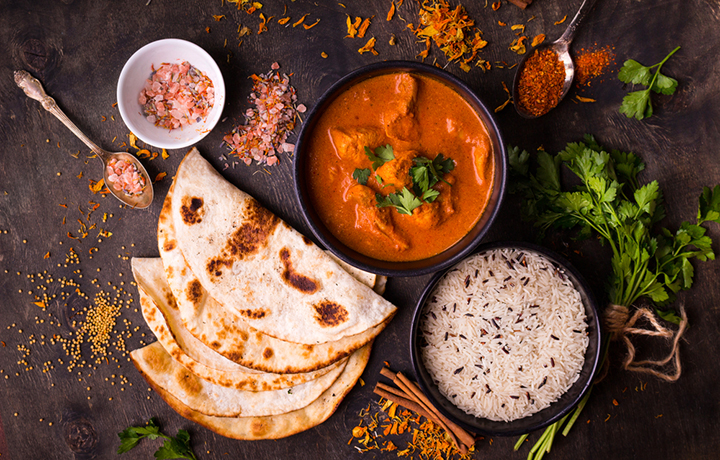Over the years, I’ve received many requests for menus for an Indian wedding or special occasion. The challenge becomes: do we take on the menu or do we outsource it to a specialized third party? In some cases, you may have to turn business away because you’re not equipped for the complexity. This is not a great feeling, but it’s important to remember that in order to please your client, you need to be as true to their taste as possible.
Cultural, religious, regional, and personal influences are often at play when it comes to special family gatherings. It’s important to always be conscientious of what is right for each particular family. One thing you can easily bring to the equation is the understanding of how the family’s foods are served. This can help in coordinating table settings, food presentations, and menu construction.
Indian food is a dynamic cuisine that can’t be learned in the time between a menu request and the tasting. Here are some important factors to consider before hastily trying your hand at Indian food.

Indian street food influence
When we design an event, we traditionally break it up into hors d’oeuvres followed by the main meal. Modern Indian weddings follow similar traditions, but they involve modern approaches that draw from street food culture.
Registration is NOW OPEN for Catersource 2020, co-located with The Special Event! Click here for more information or to register!
Street food culture in India is not the same as in the Western world. Street stall vendors provide for many citizens across the country, and oftentimes that is the majority of what those citizens eat on a given day. The presentation features small plates versus hors d’oeuvres. However, there are a few items such as chaat, panipuri, and small bites that are regularly seen as pre-meal offerings.
Chaat, a fried dough made from chickpeas or rice flour and seasoned, makes a great bar snack. These dried snacks can be used as finger foods that guests can help themselves to. They can also be assembled to order and presented on small dishes or in natural containers such as banana or betal leaves. Other items such as fried potato tikka, pakoras, and samosas can be done the same way and embellished with chutney yogurt and fresh vegetables such as tomatoes, onions, and cilantro.
The use of variety
In regard to the main part of the meal, as a whole, Indian and Pakistani dishes are communal offerings and not well suited for traditional plated presentations. Even in restaurants, food is served in this format or in shared dishes with an assortment of garnishes or table accompaniments. Most dishes are also served simultaneously on a table, in a buffet, or in a Tiffin (light tea-time meal).
Having a variety of dishes to choose from is the hallmark of a banquet or formal meal. The majority of Indian food is broken down into three general types with certain rules and traditions of what and when items can be served together.
• Dry cooked such as tandoori, biryani/pilau, and certain vegetable dishes
• Wet dishes such as dals, korma, tikka masala, and soups such as sambar
• Accompaniments which include breads, crackers, chutneys, and seasonings
The full dining experience
The type of accompaniments selected directly influence table settings and vary from one part of the country to another. In the north, you will see far more baked or pan-cooked bread such as naan, paratha, and roti. In the south, you often see fried crisps and rice.
Diners tear small portions of bread and fold it into a small pocket to scoop the desired amount of food. Additional chutneys and seasonings, such limes, lemon wedges, and salt, are provided with meals. These are generally served to each guest individually and can be pre-set on the plate.
This is only a small portion of understanding of Indian cuisine and dining culture. Taking the time to learn and respect any culture’s cuisine while providing great service can go a long way for your clients.
Here are other articles you might find helpful:
· List of Common Indian Street Foods
· Cicerone Selections: What Beverages to Pair with Indian Food



